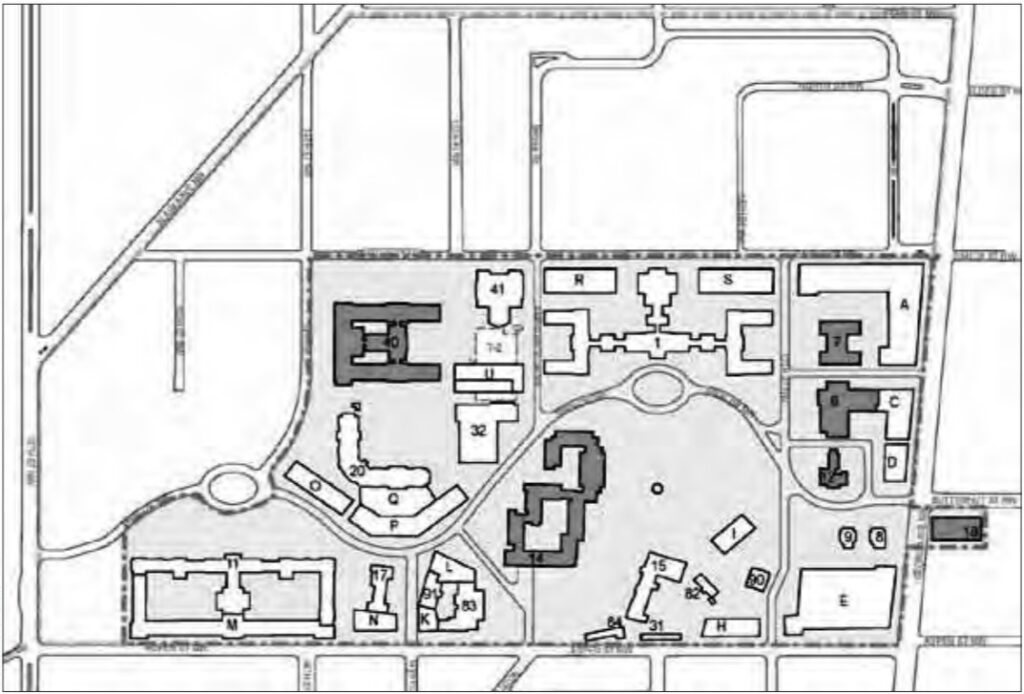Can the reuse plan for Walter Reed be a significant part of the city’s strategy for ending homelessness, particularly for homeless veterans?
The federal government has declared 62.5 acres of the Walter Reed Army Medical Center in Washington, D.C. as surplus property. The Local Redevelopment Authority must prepare a plan for reuse of the site in order to acquire a portion of the site for local use. On Thursday, Oct. 21, more than 200 people attended the public presentation of the Draft Final Reuse Plan which had been approved by the LRA Committee.
Why is this important for Street Sense readers? The Walter Reed site represents a major resource in terms of land and buildings; it is of national, historical and moral interest because of its legacy of serving veterans.
Clearly its reuse is a major opportunity to create a range of housing, including permanent supportive housing and affordable as well as market-rate housing. In particular, there is an opportunity to address the appalling reality of veterans and families who are homeless in the nation’s capital. While commendable progress has been made in housing over 1,000 homeless people through the Housing First program, the economic crisis has created an increase in homelessness that demands a creative and aggressive use of the resources of our city and nation.
Title V of the 1987 McKinney- Vento Homeless Assistance Act made serving the homeless the first priority for the use of all surplus Federal properties including military installations. The 1994 Redevelopment Act exempted Base Realignment and Closure installations from Title V and replaced the BRAC process with a community-based process that balances various community needs, including homeless assistance. In this process, the LRA develops a reuse plan that balances economic development interests with the needs of the homeless.
The final draft plan had some good news. Two proposals for permanent supportive housing for homeless people were approved. The proposal by Help USA and Catholic Charities was approved for 75 units of housing for families and veterans in Building 14. The proposal by So Others Might Eat was approved for 44 units of permanent supportive housing at the site of Building 18.
Other public use conveyances included D.C. Fire Emergency Medical Service and two charter schools (Washington Yu Ying and Latin American Montessori).
The permanent supportive housing units represent over 10 percent of the 850 total residential units planned for the site, and 4 percent of the development for the site.
During the discussions at this and other public meetings, there was visible support for housing for homeless veterans. At the same time, there was a clear need for accurate information.
Many people mistakenly believed that the plan called for homeless shelters, as opposed to permanent housing with supportive services that integrate people who are homeless into the community. According to the National Alliance to End Homelessness, the cost to tax payers of providing permanent supportive housing is the same or lower as housing people in emergency shelters. When given an explanation of what permanent supportive housing actually is, several people who expressed opposition changed their reaction to one of support.
What remains unclear is whether there is the possibility or even mandate for more permanent supportive housing on the site, and how many of the remaining units will be designated as affordable housing for very low-income persons. Over 30 members of Washington Interfaith Network representing 10 different institutions in Ward 4 and other wards of the city were present to support permanent supportive housing use and to ask that at least 30 percent of the total units be designated for affordable housing.
The process is not over. The next steps include a public hearing and approval by City Council, and submission of the reuse plan to The U.S. Department of Housing and Urban Development, projected in February of 2012. HUD must review and approve, probably in May or June of 2011. If HUD believes the District plan does not have enough permanent supportive housing, it can condition its approval on an increase in the number of guaranteed units.
During this time, there is the opportunity for continued feedback and input into the plan. The Walter Reed site is a historic opportunity to gain free land for housing homeless residents of D.C., while also meeting economic development needs of the neighborhood and city.
Jana Meyer is Minister of Missions at Foundry United Methodist Church, a member of the Washington Interfaith Network. WIN is a citywide organization rooted in local congregations and associations that has organized for permanent supportive housing in the District of Columbia.








